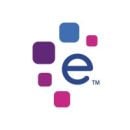
Kent Bloomstrand started his tech career the old fashioned way: With a computer science degree and a programming job at IBM in 1983.
Over the years, he’s honed his skills at Oracle and Vignette Corporation (later rebranded as Open Text). He joined
as chief technology officer in 2013.
Now, he’s working on cutting edge identity protection software, mining the dark web for the latest criminal techniques and leading teams of engineers to get in and stop them. We talked with Bloomstrand about the technology behind CSID’s fraud protection products and more.
What technologies power your business? We’re a platform as a service, so our multi-tenant, identity protection application is designed, built, tested, deployed and administered by our teams in Austin, Boston, San Diego, London and India.
But we also use some third-party providers for features, functionality, and services that do no fall into our core competencies.
CSID utilizes commercially available tools from providers like Atlassian, Aha!, and Thoughtspan, in the context of our Agile processes, to manage technology work items – for tracking status, assigning ownership, and communicating information on releases, change, and priorities across teams and organizations.
We make heavy use of Atlassian’s JIRA as the system of record for internal facing work items and formally track customer-facing support tickets across the globe using workflow technologies powered by Thoughtspan.
What are the biggest tech projects your team is working on this year?
We’re working on enhancing our overall services by uncovering more data from the dark web to help combat identity theft.
It has also been a big priority for us to expand our feature sets, services and security offerings around standards. We’re expanding into international marketplaces, so that has brought about new requirements and features that we will continue to enhance and strengthen over the coming year.
What are the biggest technology challenges you’ve faced in the past? How did you overcome them?
Trying to keep up with our growth has been challenging for our system and the teams. We optimized and revamped aspects of our application and the system architecture to meet and exceed the growing demand.
We also needed to learn how to adapt quickly to the business growth. We addressed limitations with our processes, reorganized teams for better focus and scalability, defined “best practices” for policies and procedures, all the while ensuring that what we were doing was not disruptive to the business. Maintaining our growth and momentum while enabling major change was key.
What are lessons you’ve learned about working in Austin that other local entrepreneurs can learn from?
Austin is known for being a place where you can incubate and be a successful entrepreneur, but it’s also a very competitive landscape. Winning the hearts and minds of technical talent is key.
We’ve focused not just on our own business growth but also the culture of our workplace. Work-life balance is critically important to us, and all of our employees come to CSID to work hard and succeed, but also have a life beyond work. Making work fun and flexible at the office isn’t just important, it’s come to be expected.
If you’re of an old-school business mentality, you’ll struggle to attract today’s top technical talent in Austin. It’s a competitive landscape, and the companies that are successful, especially in a market like Austin, are those that offer an attractive company culture and connect with their employees.
Austin is known for having a large talent pool of thirsty, young workers. What are the top characteristics you look for in a potential hire?
Aptitude and attitude are the two major characteristics we seek in potential employees. We also expect a certain level of technical talent as a baseline. We’re willing to take bets on people who may not have had as much experience, but have a positive, can-do attitude. A willingness to learn our business is key.
Our ideal candidate is someone who not only has the technical abilities but also an appreciation for who we are as a company and a desire to do more than just write code. On the harder-skills side, we look for candidates who are strong in PHP, Java, Pearl, JavaScript and HTML.
We also look for those that have experience with the Linux, MySQL, and Apache web servers. Our strongest candidates aren’t pigeonholed or limited in their skills or interests. While we require specialization, we also look for people who have a broad range of experiences.
How would your team describe working with you? I would hope that they would say that I can empathize with the challenges they’re facing, understand their work, and motivate them.
I think a supportive culture is incredibly important. Leadership is about providing clear direction and priorities, arming employees with the tools they need to be successful, and letting them go from there knowing I am always available to support them. I want every employee to see clearly how they’re contributing to our company’s success.
I think it’s essential to maintain a good sense of humor as well, and keep things enjoyable at the office while fostering an environment of challenging, meaningful work.
Some responses were edited for length and clarity.
Have a tip for us or know of a company that deserves coverage? Email us a tip.




